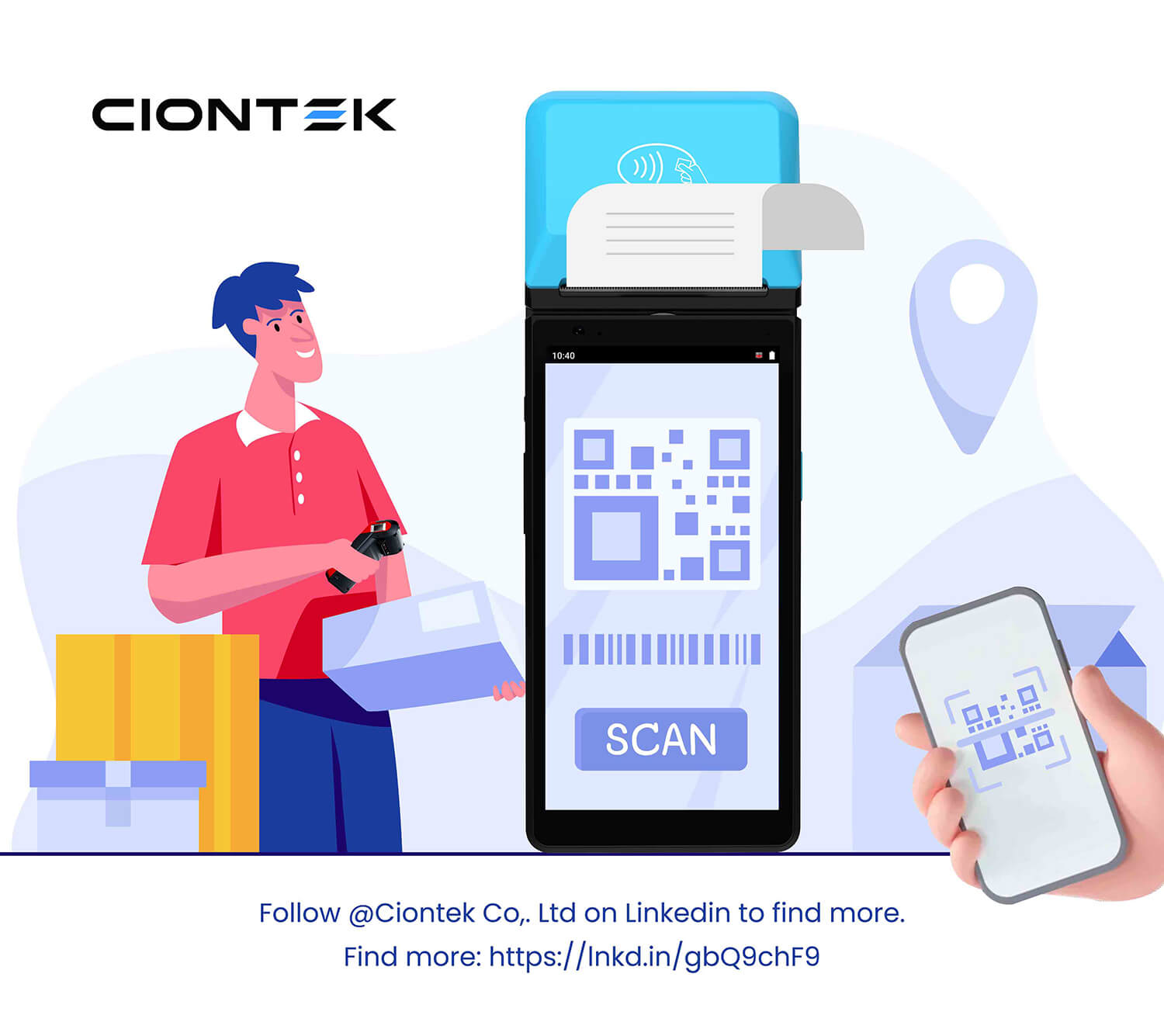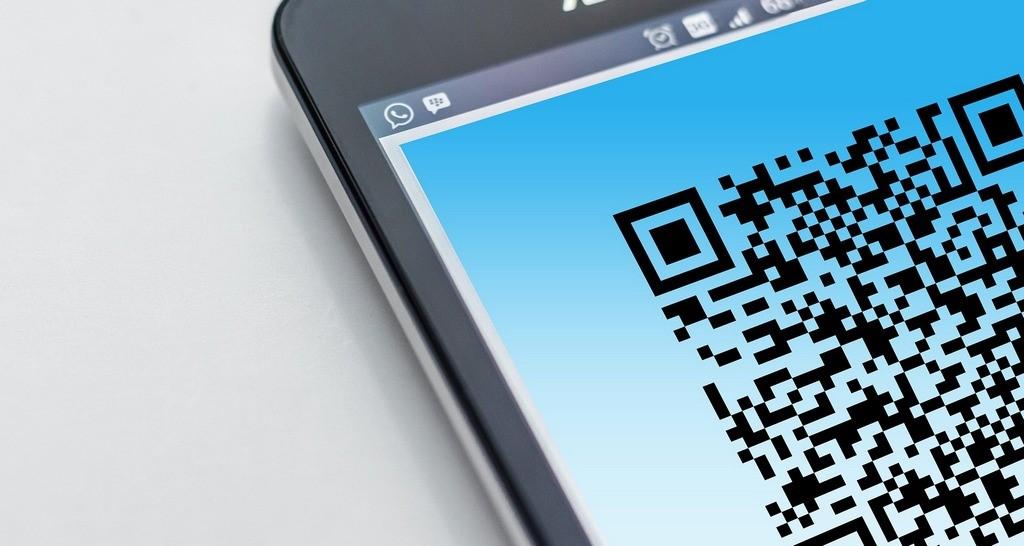Qr Codes: The Future Of Mobile Payment Systems?|CIONTEK
2022-12-18

It’s strange how technology use changes over time. Take the QR code: It has been around for more than a quarter of a century but is only now starting to become more visible in our lives. What began as a simple tool to help Japanese car makers track their inventory around their factories is now everywhere from ticketing to advertising. Soon it will be in our wallets too.
QR codes have been used as a way to initiate a payment in a store, restaurant or transit for some years now, mostly in Asia. But recently, we are seeing technology extend further around the world.
What is QR code and what’s its history?
QR is an abbreviation for Quick Response. The QR Code is nothing but a two-dimensional code. It has a pattern of black squares that are arranged on a square grid with a white background. Imaging devices such as smartphone cameras can be used to read these QR Codes.
QR Codes are quite similar to a bar code except for the fact that it can store a larger amount of information per unit area.
A Japanese company named Denso Wave in the 1990s invented the QR Codes. Initially, QR codes were used in the automotive industry mainly for production, tracking, and shipping. However, slowly it got adopted outside the automotive industry for applications that included item identification and marketing.
Many experts have said that the QR codes didn’t take off as expected in its initial years. However, in some countries, specifically China, it played a crucial role in the rapid growth of QR code mobile payment services as it enabled businesses to accept digital payments without investing in any hardware such as the point of sale terminal.
How Do QR Codes Work?
One major difference between QR codes and barcodes is that the QR codes can be scanned from both paper and screen. On the other hand, linear barcodes can be scanned only from the paper. That’s precisely the reason why you see QR codes both on apps as well as at the online stores.
To scan a QR code, you need to have one of the following things:
- A barcode reader that has the capability to scan QR codes.
- Tablet or a smartphone with an inbuilt camera.
There are also some payment and banking apps that can process QR codes for the purpose of bank transfers and payments.
There are many ways in which a QR code can be processed. Some of it is mentioned below:
Scanning recipient’s QR code with a smartphone
In this process, the user has to open the phone camera or the relevant QR code scan app. Afterward, they have to scan the code that is displayed on an individual product, paper bill, or at a store’s checkout. Various offers and loyalty points might also be applied via the application in case it’s a store specific application.Retailers scanning QR code on user’s phone screen
In the QR code payment process, the user opens the payment app once the total transaction amount is set in the POS system of the retailer. The QR code payment app displays a QR code that identifies with the user’s card details. The retailer then scans the QR code with a scanner thus concluding the transaction.
App-to-app payments
In this process, both the sender and the recipient open their applications. The sender then scans the unique QR code that is generated in the recipient’s application. The sender, at last, confirms the amount to be paid and taps to complete the payment.What are the Different QR Code Options?
There are two main implementations and a third which is less common. Here are the pros and cons of these methods:
Benefits of using QR codes
QR code comes with several benefits that help you to reach out to all your potential customers. Let’s have a look at a few of them.Instant payments
One of the biggest advantages of using QR codes is that it facilitates instant payment. Making payment via QR codes is extremely quick as compared to other modes of payment. All a user has to do is simply open the QR code scan app, scan the QR code, and confirm to process the payment. Within a few seconds, the payments are made.Top-grade security
Making payments via QR codes is very secure. It’s because the QR code is nothing but just a tool that is used to exchange information. Any data which is transferred via QR codes is encrypted thus making the payment foolproof secure.Easy to set up
Setting up QR code payments is extremely easy. You don’t need much of an infrastructure. You only require a smartphone with a camera and a QR code which is either printed or in the electronic form. The usage of QR codes for payments also eliminates the requirement of point of sale machine or any other special equipment used for payments.Higher reliability
QR code payments are a foolproof payment method as it eliminates the probability of any kind of error. The pattern of black boxes consists of unique data which enhances the reliability of the QR code payments.Major use cases of QR code payments
QR codes offer easy payment solutions to several businesses. Let’s have a look at some of the major QR payments use cases.Fuel retailers
Fuel retailers can also use QR codes to make payments easy for their users. There are fuel retail wallet solutions that allow the users to fuel their car by simply entering the amount of fuel in the application. These applications come with multiple modes of payments which also includes payment via QR codes scanning.E-ticket booking
QR codes are also used in E-ticket booking. The E-ticket booking application enables its users to book tickets for bus, flight, train, movies, amusement parks, and many more by just making a few clicks on their phone. These apps have multiple modes of payment and QR code payment is one of them.Toll payments
Toll booths can also use QR codes to facilitate quick and simple toll payments. There are toll payment wallet apps that allow the user to make cashless toll payments. These apps include multiple cashless payment options that include QR code payments along with RFID and NFC cards.Parking payments
QR codes can be used as a mode of payment in a parking payment solution. A parking payment solution allows its user to search and book his parking space through a mobile application. Once the parking space is booked, the user can simply scan the QR code present at the parking garage to make the payment.Street vendors
QR codes are widely used by street vendors that have a minimal range of goods. They simply print a QR code for all their product that consists of its description and price. To purchase any product, the user has to scan the QR code and confirm to make the payment.Micro-business
Micro-business that has a small range of goods also uses QR codes for payments. Here the merchant generates both the invoice of a particular amount and the QR code. He then displays the QR code on the screen of the smartphone. To make the payment, the customer has to scan the merchant’s generated QR code from their mobile wallet application.SMEs (Small and medium-range businesses)
In this, the merchant prints QR code for each of his vendors that indicate the cash register location and other details. To make the payment, the customer has to scan the vendor’s QR code. The vendor then sends the receipt to the customer’s smartphone from the cash register. Finally, the customer confirms the payment.
Previous Article
Next Article